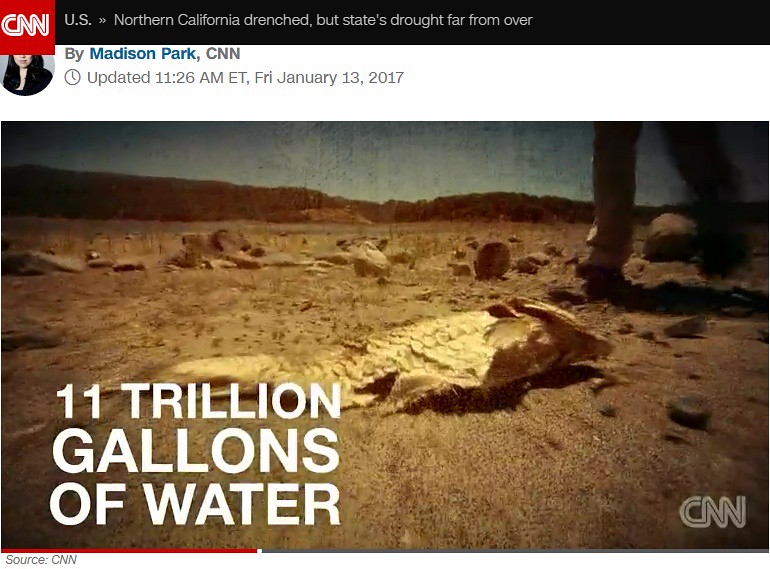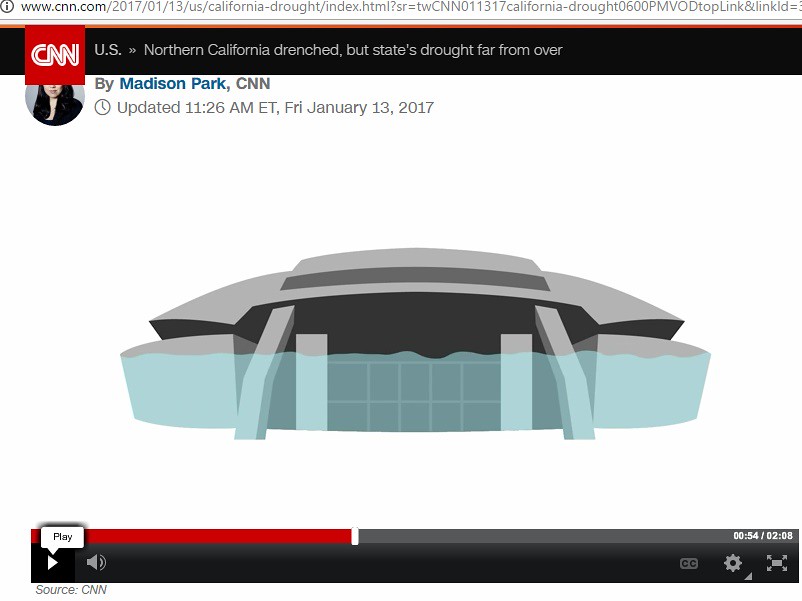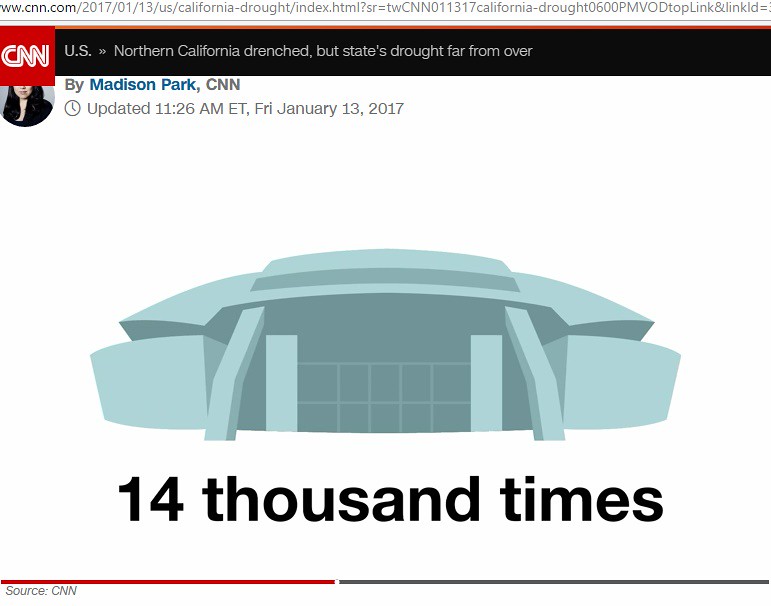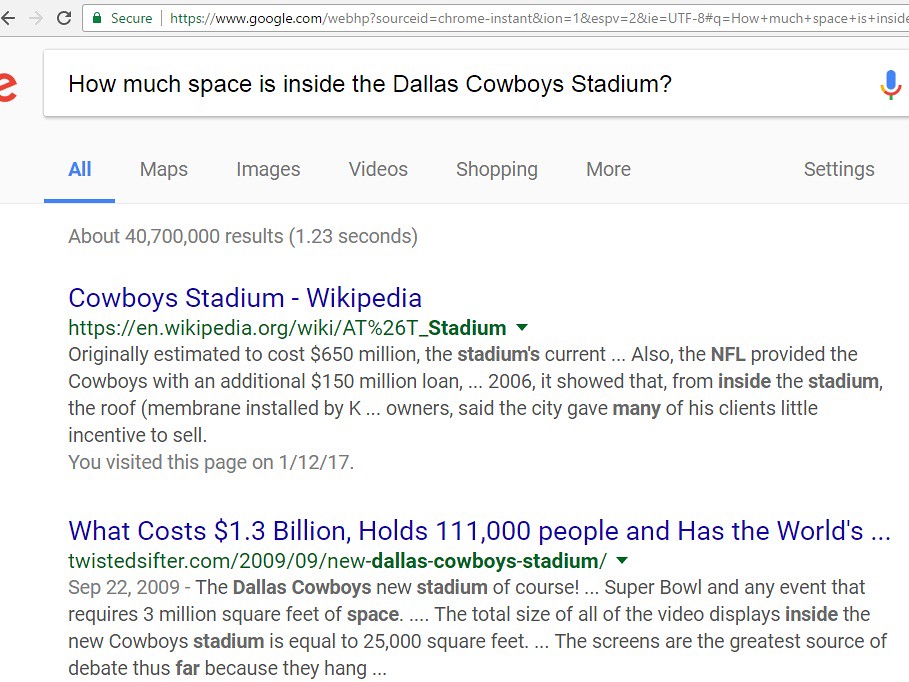According to their estimates, the enormous volume of water equates to the following volume:
Filled 14,000 times:
I could not get this out of my mind for obvious reasons. At the time of the article, I was busy with work and could not take the time out to verify the claim. The time has come to verify the claim by the news agency "CNN". In the paragraphs below, I will show you (the reader) how to work out the math to verify the claim -- that 11 trillion gallons of water equals the volume required to fill the Dallas Cowboys Stadium 14,000 times.
Dallas Cowboys Stadium Volume?
Last week, I was at a science fair as a judge. I wrote about this wonderful experience. As I mentioned in that post, one of the best parts of the experience is to discuss various ideas with other judges and teachers. I was throwing out the statistic of 11 trillion gallons being able to fill the Dallas Cowboys Stadium 11,000 times to an elementary school teacher.
At first, she was confused as to how I would find the volume of the stadium. I said the process is quite easy. Just ask Google the following question:
How much space is inside the Dallas Cowboys Stadium?
Here is the image of the response that I see shown below:
Either source has the appropriate amount of information to determine the volume of the Dallas Cowboys Stadium. Although, a search through each article will reveal that the site "TwistedSifter" has the volume stated as equal to 104 million cubic feet. That is easy right?
Next, with the volume of the Dallas Cowboys Stadium known, the units in which the values are expressed need to be the same before dividing them by each other. As the parameters that are given stand at the moment, the following are true: A) The total water needed to relieve the drought is 11 trillion "gallons" and B) the interior space of the Dallas Cowboys Stadium is equivalent to 104 million "cubic feet." Not the same units.
Either, the total volume of water expressed in units of "gallons" needs to be converted to units of 'cubic feet' or the opposite before we can proceed with the calculation. For the purposes of this blog, lets go with converting the value of the volume of the Dallas Cowboys Stadium from units of 'cubic feet' to units of 'gallons' as shown below:
Now we have the interior volume of the Stadium in units of gallons rather than units of cubic feet. Which is to say, 104 million cubic feet of interior space is equivalent to 778 million gallons of space.
The calculation is straightforward from here. The two volumes needed to divided over to yield the number of Dallas Cowboys Stadium could be filled with 11 trillion gallons -- supposedly 14,000.
According to our calculation, the answer is that 11 trillion gallons of water would fill 14,139 Dallas Cowboys Stadium. That is not the same as 14,000 Dallas Cowboy Stadiums. Inspecting this answer led me to ask the following questions:
1) Why were the initial calculations off by the volume equivalent to 139 Stadiums?
2) What is the difference in volume between 14,000 Stadiums and 14,139 Stadiums?
To answer the above question the following calculation is performed as shown below:
The results of the calculation revealed that to ignore the 139 Stadiums is to ignore 108 billion gallons of water!
Conclusion...
The results of the calculations revealed that there was a difference between what was reported and the actual value. In the video cited produced by the news agency 'CNN' stated that 11 trillion gallons would be equal to filling up the Dallas Cowboys Stadium 14,000 times. The results obtained above show that actually the number of Stadiums which could be filled is closer to 14,139 times. Further, that the difference is equal to 108 billion gallons of rain. Although, to be fair, the methodology of the news agency employees who calculated the statistic is not known. Which raises the following questions:
Maybe the employees at 'CNN' used a slightly different volume?
Maybe the employees at 'CNN' decided to 'round off' to the nearest thousand and neglect 108 billion gallons of water?
Regardless, as I have shown you in the above paragraphs, arriving at an answer that is close to or more approximate to the reported value is possible. You can do this yourself. The information is freely available as I showed. I encourage you to practice by yourself. Additionally, if you find an interesting statistic that you would like me to repeat, then place a note in the 'comment' section below.
Until next time, Have a great day!







No comments:
Post a Comment